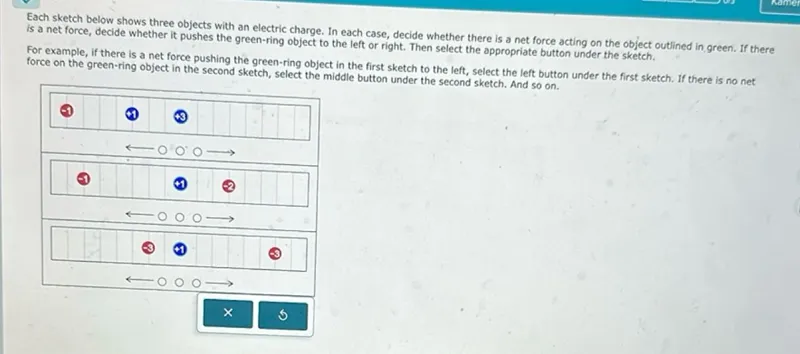Questions: Each sketch below shows three objects with an electric charge. In each case, decide whether there is a net force acting on the object outlined in green. If there is a net force, decide whether it pushes the green-ring object to the left or right. Then select the appropriate button under the sketch. For example, if there is a net force pushing the green-ring object in the first sketch to the left, select the left button under the first sketch. If there is no net force on the green-ring object in the second sketch, select the middle button under the second sketch. And so on.

Transcript text: Each sketch below shows three objects with an electric charge. In each case, decide whether there is a net force acting on the object outlined in green. If there is a net force, decide whether it pushes the green-ring object to the left or right. Then select the appropriate button under the sketch.
For example, if there is a net force pushing the green-ring object in the first sketch to the left, select the left button under the first sketch. If there is no net force on the green-ring object in the second sketch, select the middle button under the second sketch. And so on.





